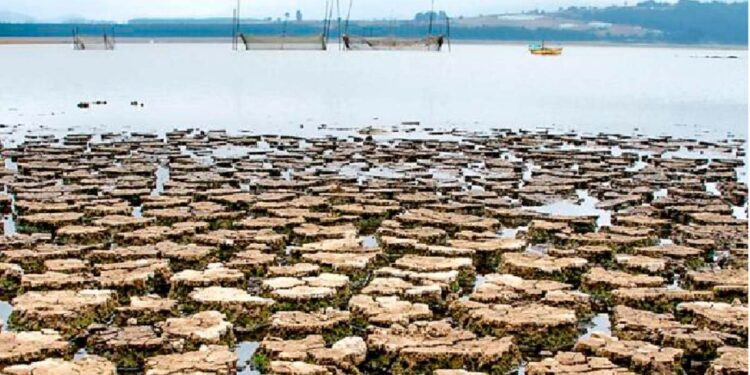Mexico is drying up. Years of lack of precipitation and temperatures above normal parameters have already caused more than 25% of the country to be in a situation of extreme or exceptional drought, forcing the implementation of restrictions of varying intensity for millions of its inhabitants.
According to the Meteorological Service of the National Water Commission of Mexico (Conagua), only a quarter of the country remains unaffected by the emergency situation. However, after experiencing historically high temperatures throughout May, Mexicans are starting to fear that even their major economic hub, Mexico City, will run out of water before the end of June. The highlighted deadline is June 26, although Conagua has recently tried to downplay it, attributing it to a misinterpretation.
Nevertheless, the National Water Commission is not downplaying the alarm signs. The water scarcity in the Valley of Mexico is evident in the water reserves data of the Cutzamala System, located between the states of Michoacán and Estado de México and providing 25% of the water consumed by the country’s capital and its metropolitan area. With only 30% of its capacity remaining by the end of April, despite recent rains, authorities in Mexico City continue to update crisis protocols and consider possible water restrictions for its 22 million residents.
The concern is evident. Regulatory agencies have gradually reduced the volume of water that the dams irrigating the Valley of Mexico from 14.8 cubic meters two years ago to just eight currently. This has led to sporadic water cuts in large parts of the capital, forcing residents to rely on bottled water.
However, the water stress in the Cutzamala System should not be considered critical for Mexico City’s water service. The supply is supplemented by the water from the valley’s rivers and aquifer extractions. But it is precisely these extractions that experts point to as cause for concern, particularly due to the lack of rainfall, prompting the need for medium-term emergency plans.
As of April, Mexico has experienced one of the driest periods in its history. According to the National Meteorological Service, precipitation levels have reached 47.7 millimeters of rain, 32% below the historical average. Conagua reports that the 210 most important dams in the country are at 43% of their capacity. And the forecasts are not favorable: the Water Commission anticipates three heatwaves even before July.
Most of the water is lost through leaks
All of these issues are compounded, in the case of Mexico City, by a network of pipes, distribution channels, and sewer networks over 50 years old, riddled with leaks and breakdowns. The city’s demand is rising as its population grows, but the capital authorities are struggling to deal with decades of underinvestment in its water infrastructure.
The story is further complicated by a paradox: for centuries, the “problem” in Mexico City was not water scarcity but, ironically, floods; the Mexican capital is built on what was once a body of water over 2,000 square kilometers, Lake Texcoco, which was drained by the Spanish conquerors in an unprecedented desiccation process in the 16th century.


